We had been told by other departing senior missionaries that the time to return home would come too soon. That wasn’t necessarily the case with us. Although we were neither ready for our mission to be over nor secretly hoping that the day would never come, when it did come, it felt right. In some ways, it was a relief.
Not quite four months before we were scheduled to leave New Zealand, a Kiwi returning home from Australia brought with them COVID’s highly contagious Delta variant. Despite New Zealand’s no-exceptions isolation policy for incoming travelers, the virus managed to escape containment and began infecting communities around the Auckland airport. As a result, on 17 August 2021, New Zealand was thrust back into a Level 4 lockdown to prevent the virus from spreading.
This time, we didn’t get much notice. We (Michael and Nancy) were at the Matthew Cowley Pacific Church History Centre at 6:30 p.m. on that Tuesday evening to welcome a group of youth from our own ward who were coming to watch Joseph Smith: Prophet of the Restoration in our theatre. As Nancy reached for her phone to turn it off when the group began to arrive, she saw a notification that Prime Minister Jacinda Ardern was about to make a special announcement. “We’d better listen to this,” she said, switching on Radio New Zealand just in time for everyone around to hear that Level 4 restrictions would take effect at 11:59 p.m. that night and last at least through the end of the week. Reactions from our young visitors were mixed; some teens were ecstatic that they wouldn’t have to go to school or early-morning seminary for a few days; others were disappointed that they would have to stay isolated from their friends again. We proceeded to watch the movie, which was interrupted at a particularly inopportune moment by the blare of dozens of phones officially announcing the lockdown, and then lingered afterward in the carpark for as long as we dared. Everyone seemed reluctant to leave, knowing that we wouldn’t be able to gather with friends again for what might turn out to be a long time.
Although we knew that we wouldn’t be able to return to the office for the rest of the week, we didn’t attempt to take any extra equipment home because there just wasn’t time—and, to be honest, because we were kind of excited to take a few days off work with impunity. The past few months had been stressful. Since the opening of the Sacrifice and Consecration exhibit at the end of May, we had presented special museum programs for several large groups—some with only a few moments of preparation when a couple of vanloads arrived unannounced. At the beginning of August, we also had begun opening the museum on Sunday afternoons to encourage more local families to visit, and Elder E had recruited several new volunteer guides to fill those additional shifts. Nancy had thus spent many recent hours conducting guide-training sessions, usually one-on-one—an enjoyable and rewarding task, but one that prevented her from making much progress on the writing projects she needed to finish before November. Since the departure of Elder and Sister T (aka Alan and Wendy, the MCPCHC’s acquisitions specialists) at the end of July, Michael had been trying to do a systematic assessment of the tall stack of acquisitions case files Alan and Wendy had not had time to complete.
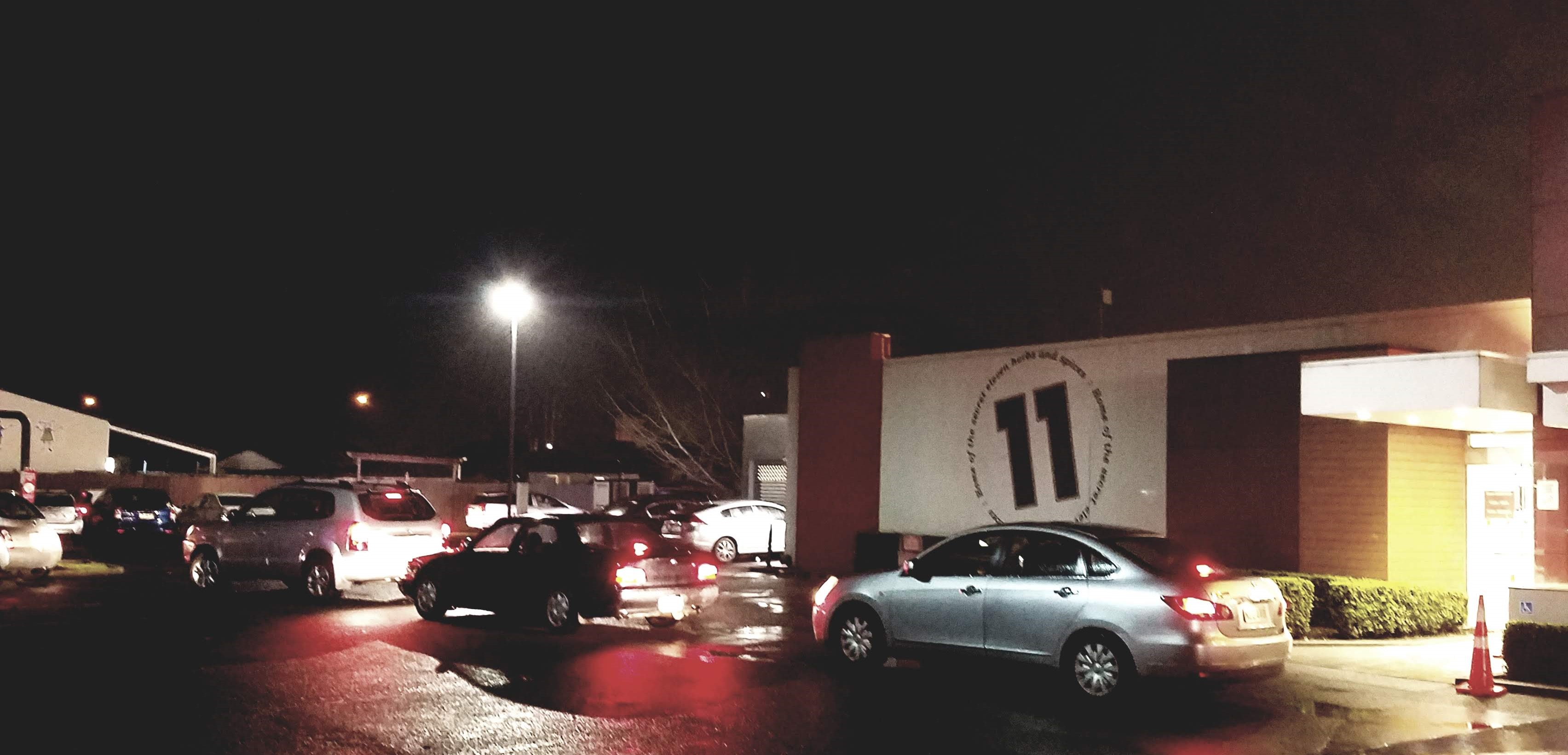
KFC drive-thru the night Level 4 restrictions were lifted
It came as no surprise when our Level 4 lockdown was extended until the end of August. The upgrade to Level 3 that most of the country got on 1 September didn’t make a tremendous difference, except that we non-Aucklanders were allowed to leave our immediate neighborhoods and expand our social bubbles to include up to ten people. We thus made arrangements to form a larger bubble with the other American senior missionaries living in Hamilton—Diane (our Church History digitization specialist) and Sister F and Sister W, the senior sisters who provide training for the young proselytizing missionaries—so that the five of us could get together for Sunday church services and a little socializing.
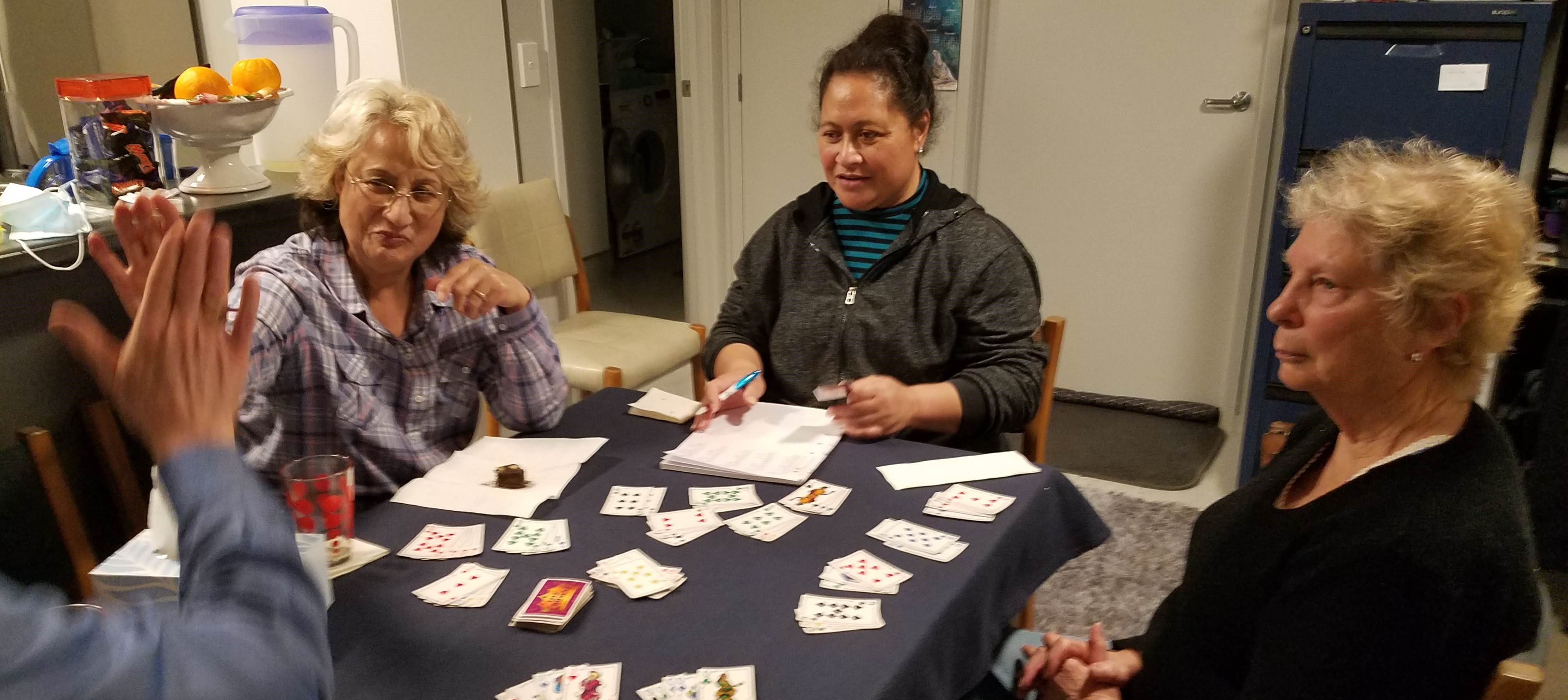
Karla, Sose, and Gail invited us into their Level 2 bubble so we could play games together
After a week at Level 3, districts outside of Auckland were upgraded to Level 2, but because newly revised Level 2 restrictions limited public gatherings to fifty people or less, church meetings continued to be suspended. President and Sister E, the American couple who preside over the Hamilton Mission, began inviting our bubble of five to hold Sunday sacrament services with them at the mission home, and to stay afterward for lunch whenever they did not have to attend virtual meetings or do interviews with the young missionaries. In those instances, the rest of us took turns hosting at our own flats.
American Senior Missionary Bubble
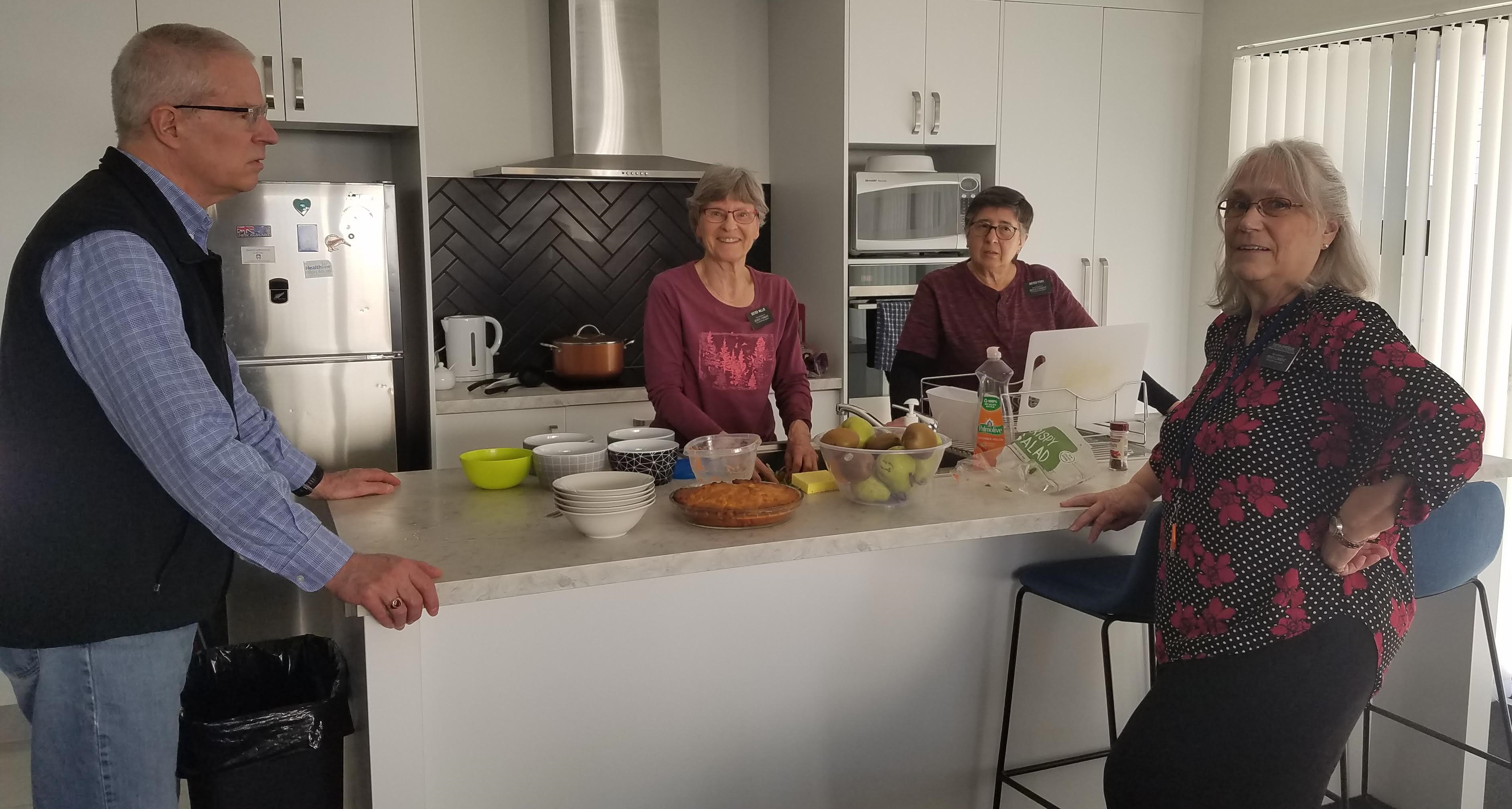 Another Sunday afternoon gathering with Michael, Linda, Lucia, and Diane |
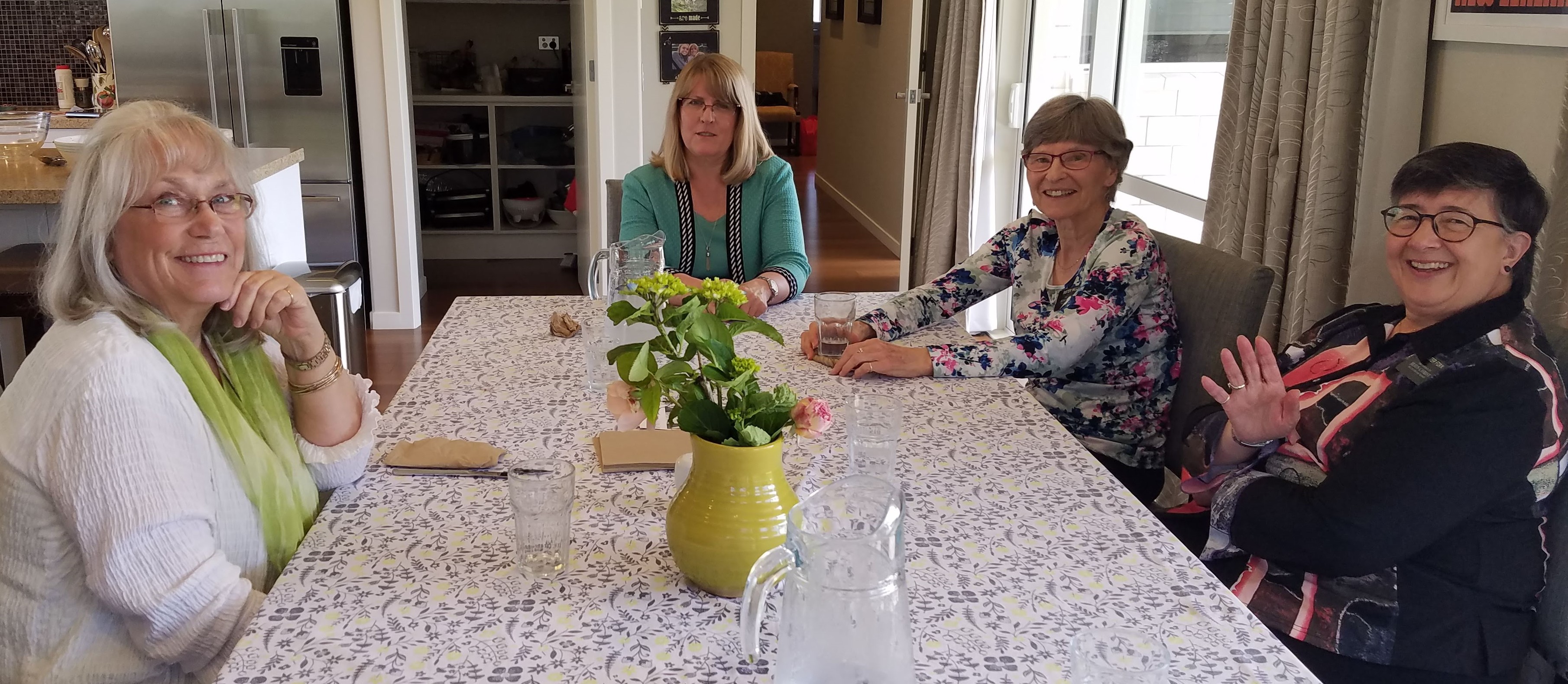 Members of our American senior missionary bubble: Diane E, Tina E, Linda W, and Lucia F |
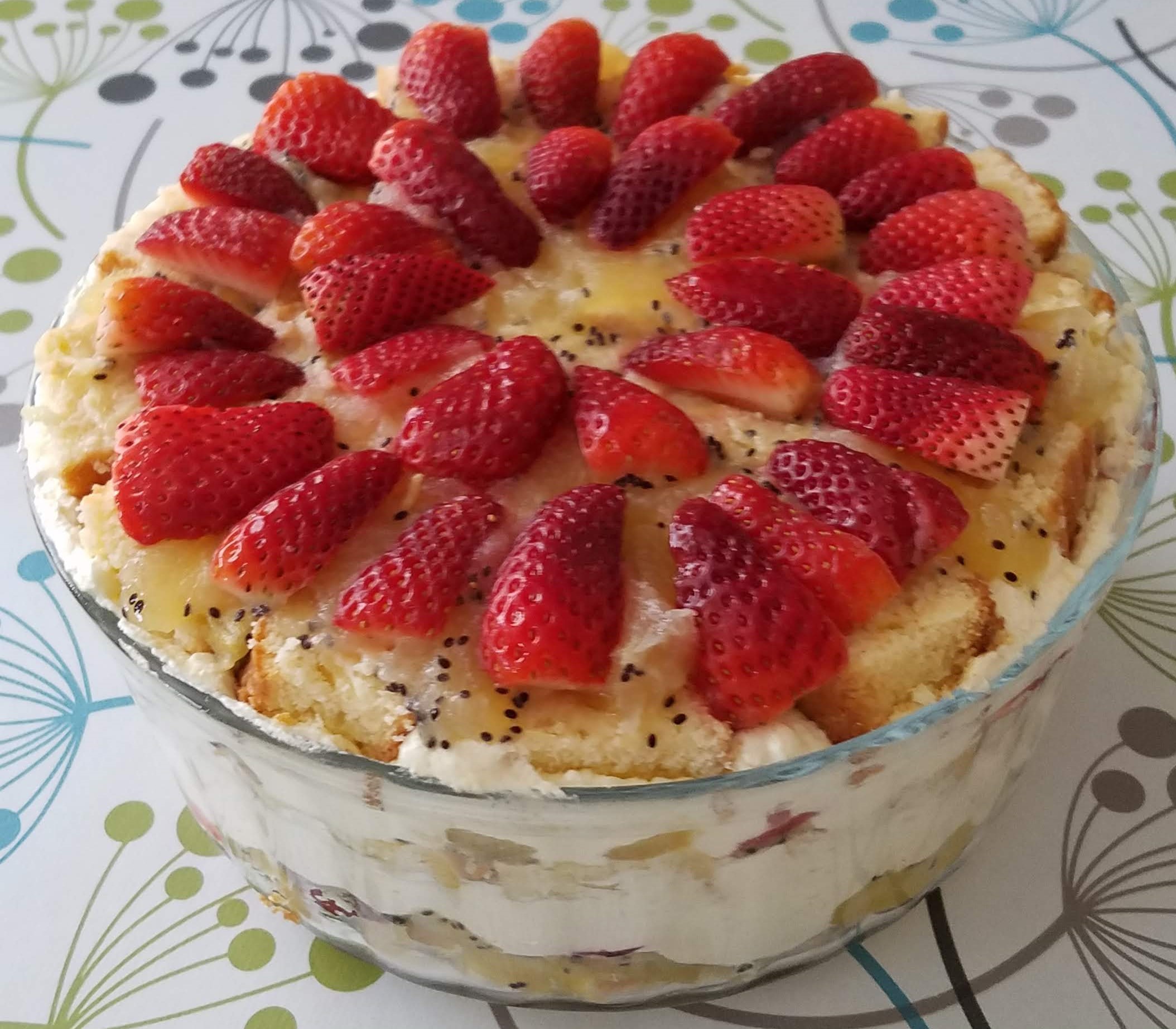 Michael offered a lemon pound cake trifle for one of our shared Sunday afternoon meals |
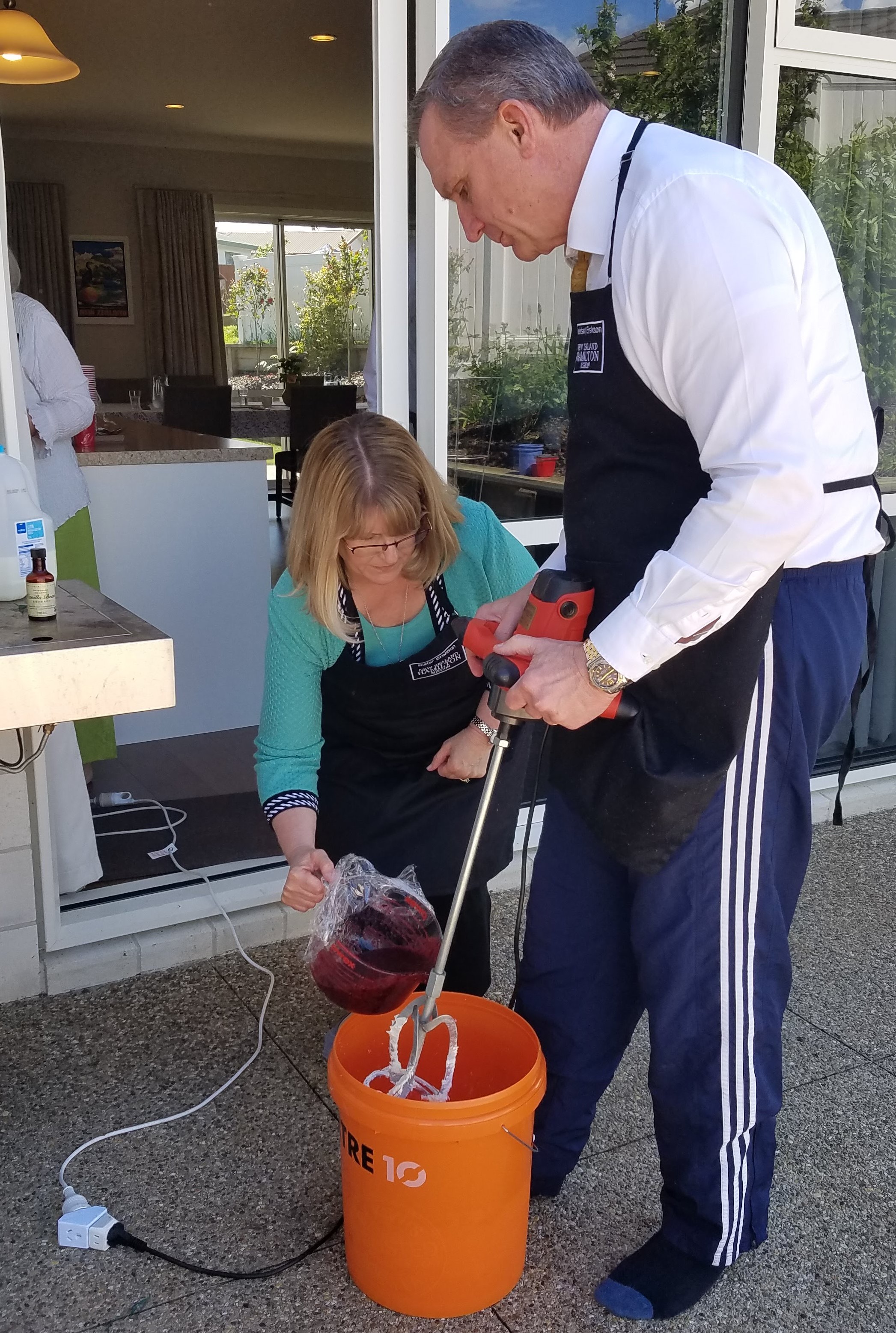 President and Sister E made a supersized milkshake for the senior missionaries |
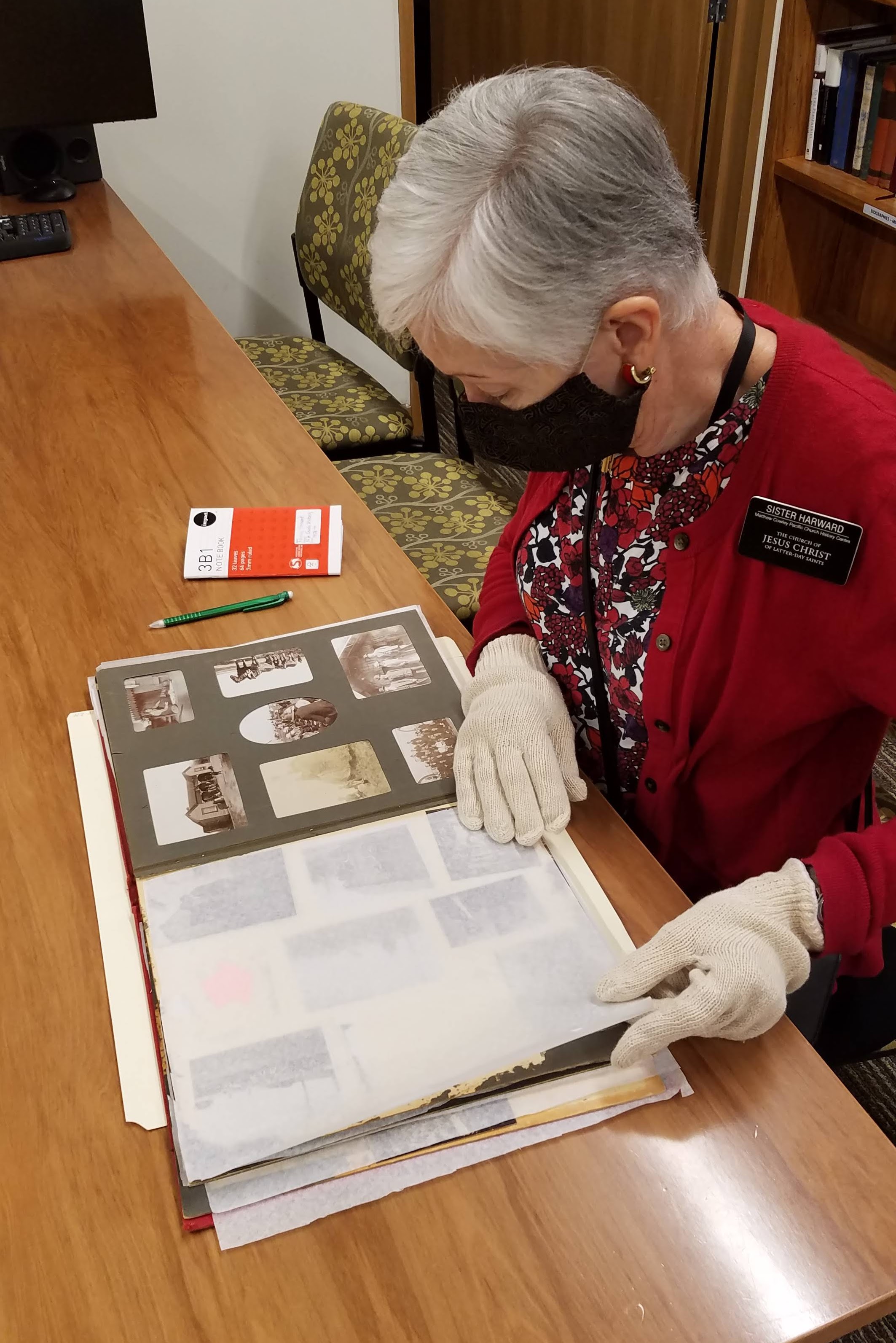
Nancy checks a historic photo album
At Level 2, we were allowed to return to the MCPCHC to work as long as we stayed masked and physically distanced from those outside our household bubbles; therefore, we Americans had to stay separated from our Kiwi coworkers, whose bubbles were already filled with members of their own families. We missed being able to mix freely with all our friends, but with access to the faster internet connections and material resources of the MCPCHC—and still no visitors to greet—both of us were able to make better progress on our individual projects. By the end of September 2021, Michael’s stack of uncompleted acquisitions files had dwindled substantially, and Nancy had finished writing her chapter and editing the chapters written by other members of the committee assigned to compose a history of the Hamilton New Zealand Temple from the time it opened in 1958 through its rededication in 20 … something. With the rededication date yet to be determined we couldn’t exactly finish the project, but Melanie—who, as the Church History Department’s New Zealand manager, had assigned us to the writing committee—asked us to take it as far as we could before we left the country.
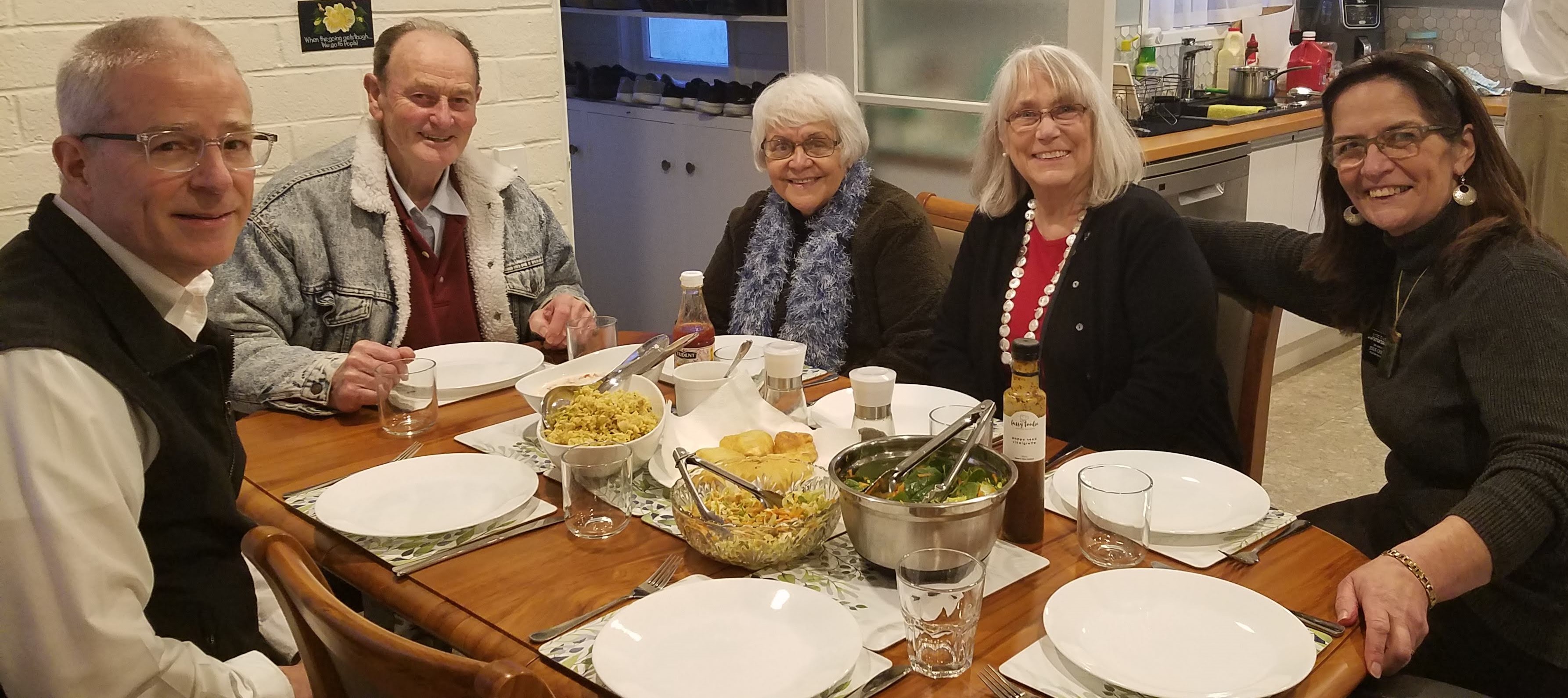
One of our last meals with our Kiwi cohort at the MCPCHC: Michael, Vic, Rangi, Diane, and Jo-Ena
After a few COVID cases turned up in Hamilton during the first few days of October, we had to endure yet another six weeks of working at home under Level 3 restrictions. There was little Michael could do this time but return to the never-ending task of organizing the MCPCHC’s digital holdings, a painstaking process made even more frustrating by the glacial pace of the internet connection in our flat. He decided to focus primarily on the oral histories Rangi and Vic had videotaped, hoping to determine which of the many digital copies of each interview existing in Rangi’s files was the definitive one. That copy would then be given a logical file name, and all duplicates would be eliminated. “I naively thought that I might actually be able to get through all of them by the end of November,” Michael explained, “but then I discovered that instead of the sixty-or-so interviews I thought Rangi and Vic had taped, they actually had made over three hundred separate videos. So I just did the best I could to get them sorted.” Meanwhile, Nancy was again grateful for time to focus on writing, which allowed her to complete an 8,000-word treatise on how records kept by members of The Church of Jesus Christ of Latter-day Saints since the 1850s had preserved important information about Māori history and culture that few others had managed to document. This composition will become one chapter of Build for Eternity, a collection of essays by various authors about the second century of the Church in New Zealand; the book is being assembled by a Latter-day Saint professor of Māori studies at Massey University in Wellington, and is scheduled for publication in 2023.
When Level 3 restrictions confined us to Hamilton, we were grateful that this little city offers so many beautiful parks and pathways to explore. When we got tired of sitting at our laptops during the days we had to work at home, we would often consult the city map posted on the wall of our study to locate a walking path we had not yet traversed and then drive a few kilometres to see what it had to offer. Frequently, we followed pieces of the 22- kilometre (13-mile) Waikato River Walk that begins at Hamilton Gardens, winds its way through the Central Business District, and ends up somewhere in the town of Ngaruawahia to the north. We never made it all the way to the north end, but by November 2021 we had walked all the pieces on both sides of the river that lie within the city of Hamilton—usually dodging cyclists along the way. We also enjoyed repeat visits to the Taitua Arboretum, which we could reach via a path from Till’s Lookout near Bremworth Park (a five-minute drive from our flat).
A Few of Hamilton’s Parks and Paths
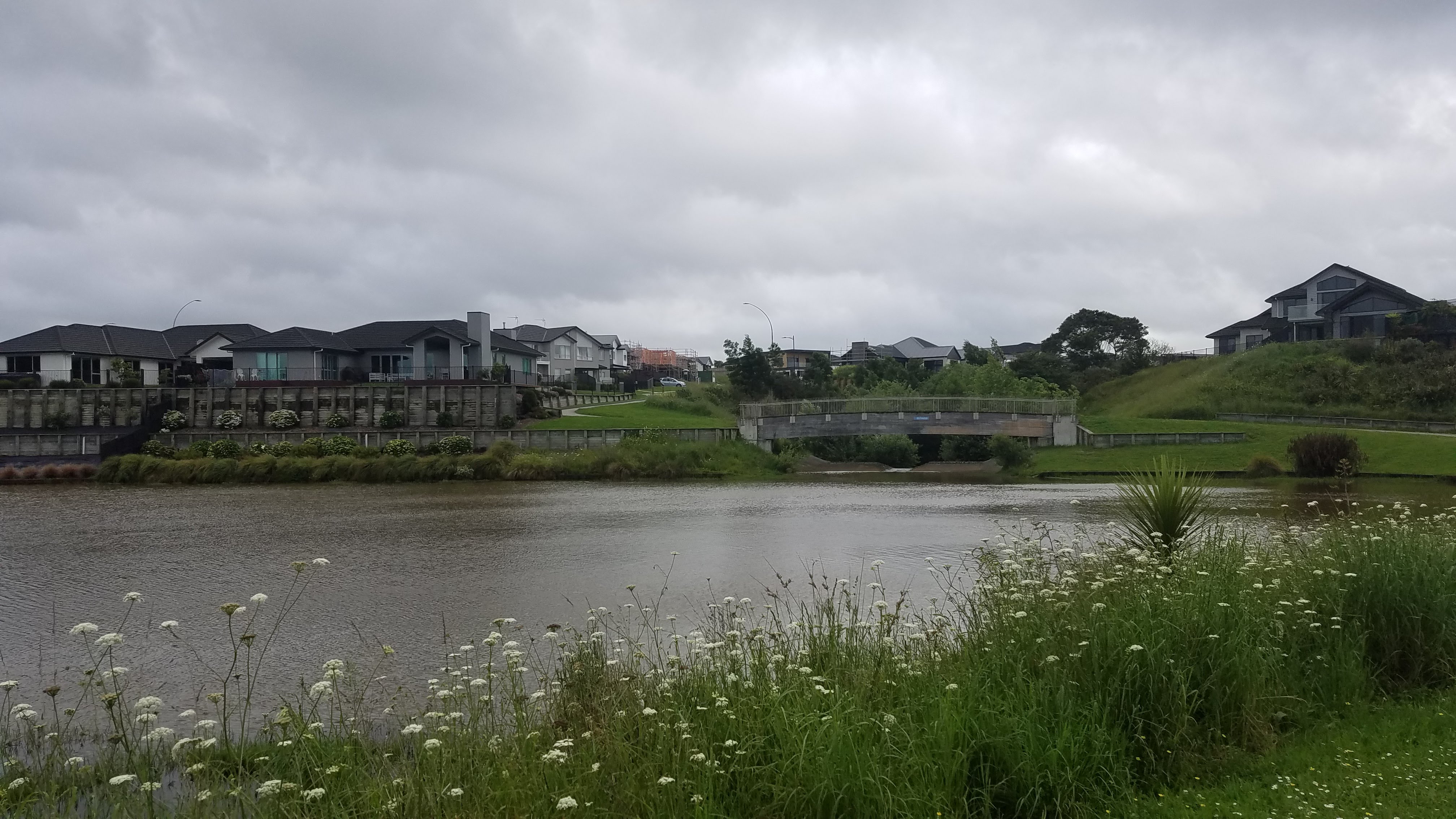 Te Awa O Katapaki Esplanade in northern Hamilton |
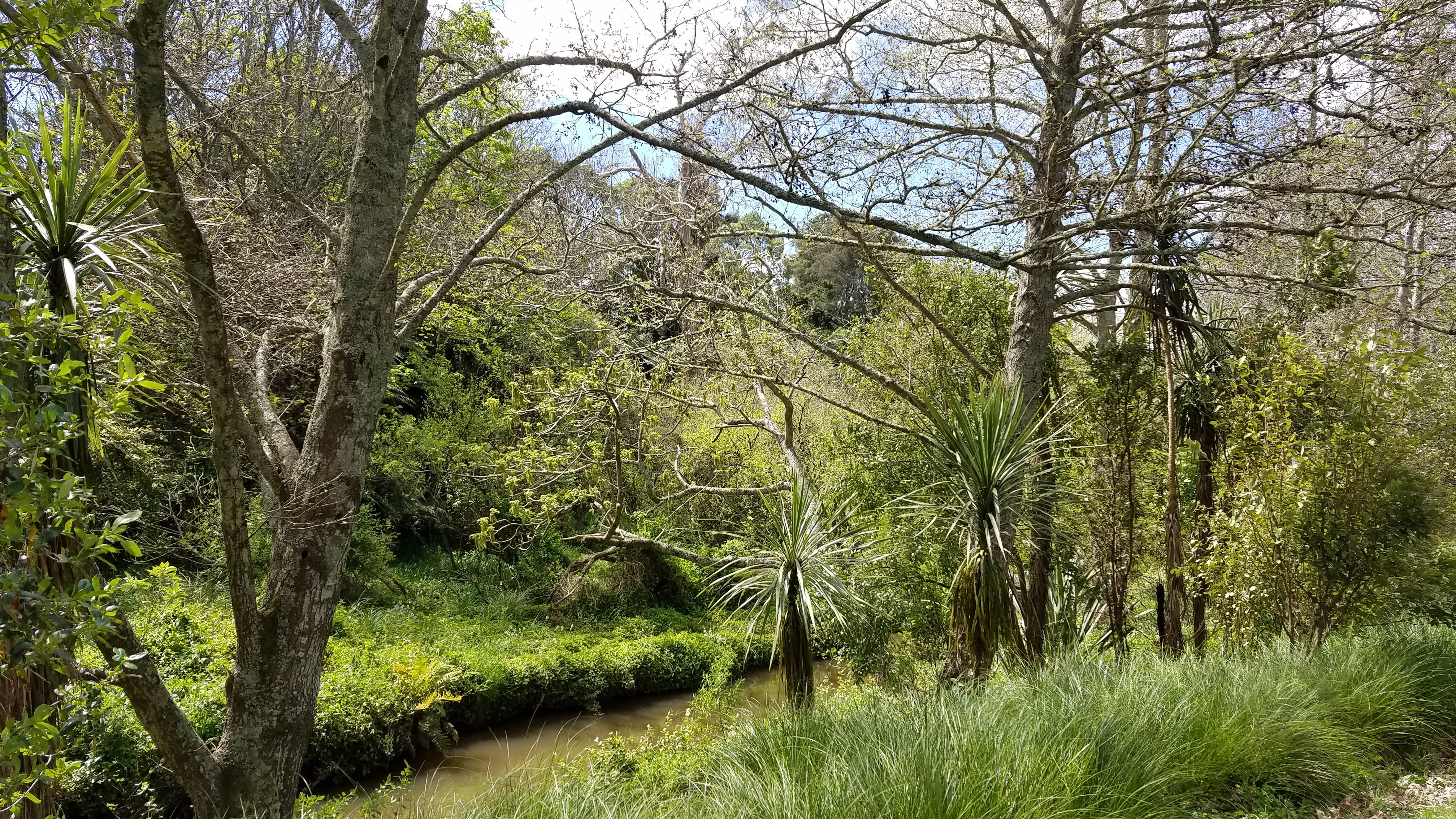 A gully runs through Tauhara Park in the Rototuna neighborhood |
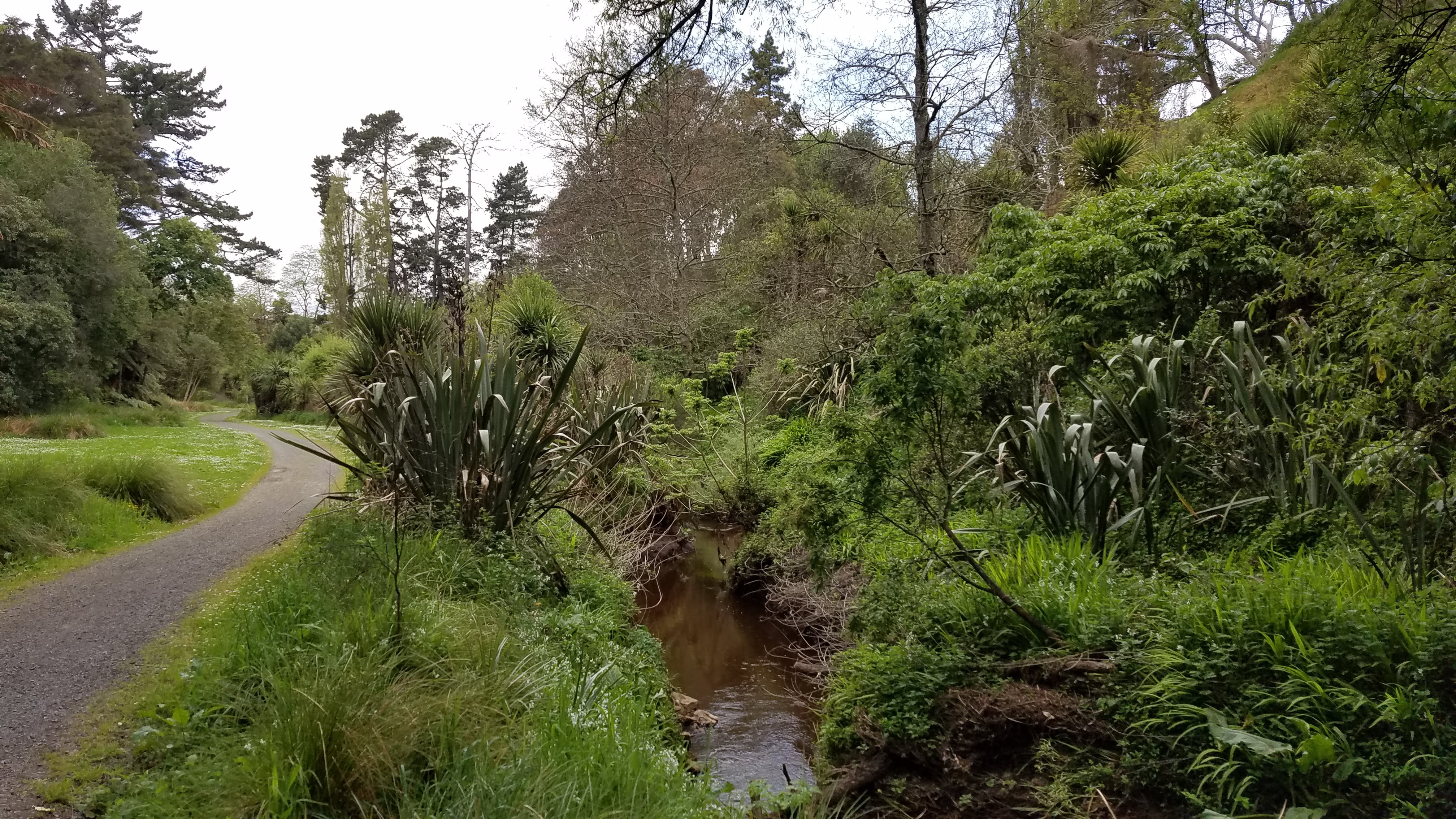 Sandford Park is part of a natural bush reserve just across the Waikato River from Hamilton Gardens |
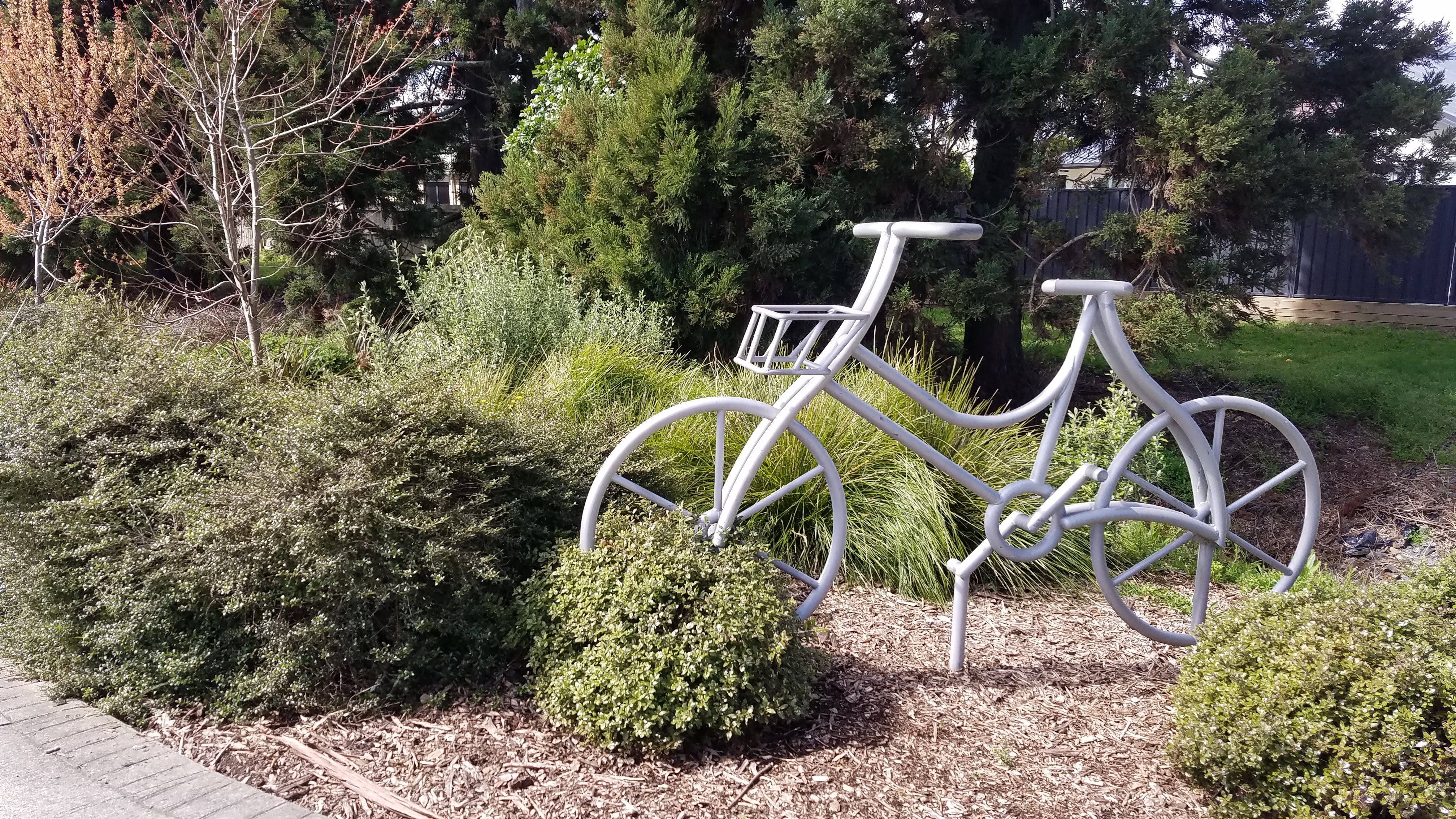 The Frankton Bike Trail runs parallel to the railway route |
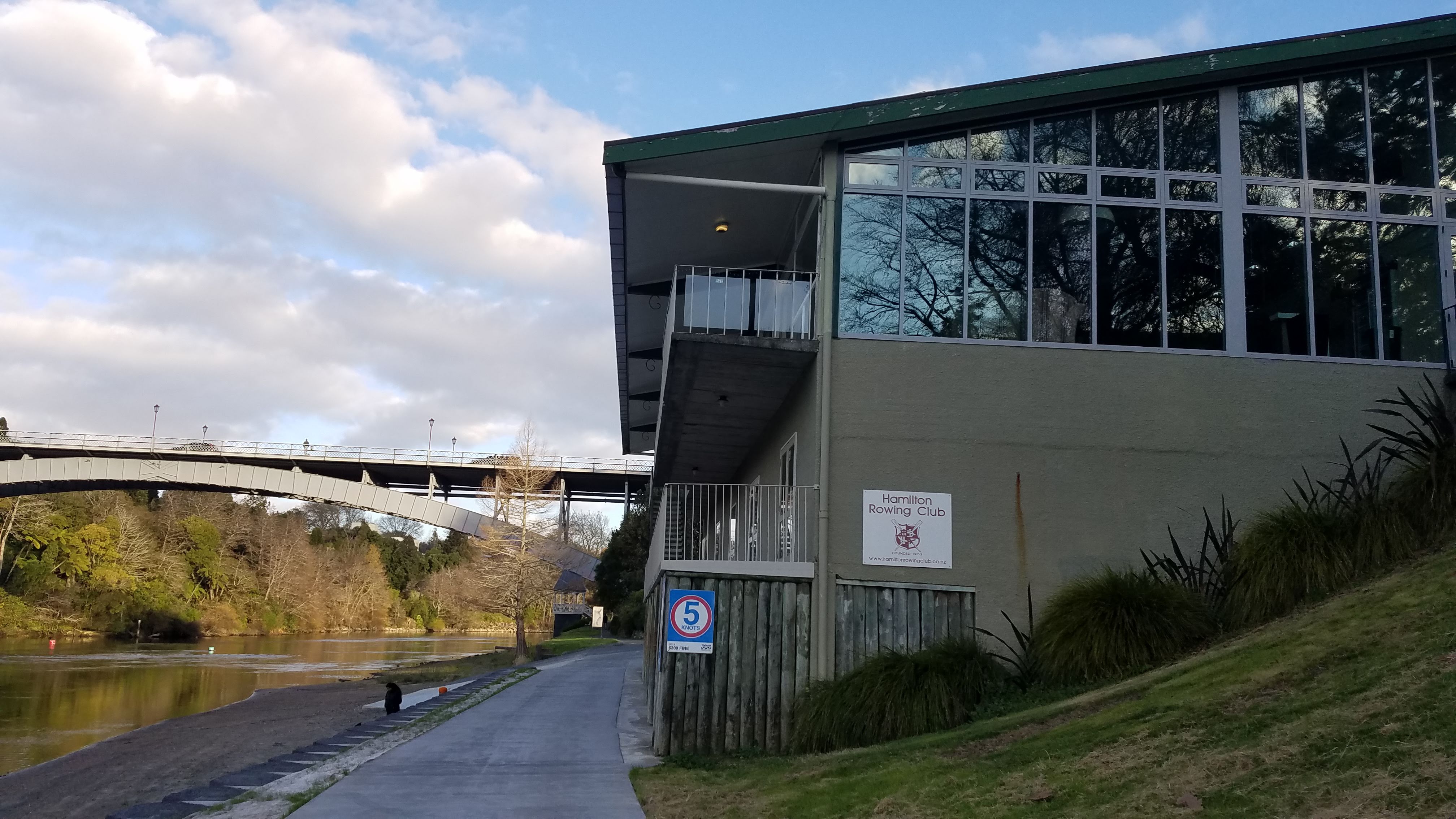 We sometimes saw scullers on the Waikato River near the Hamilton Rowing Club |
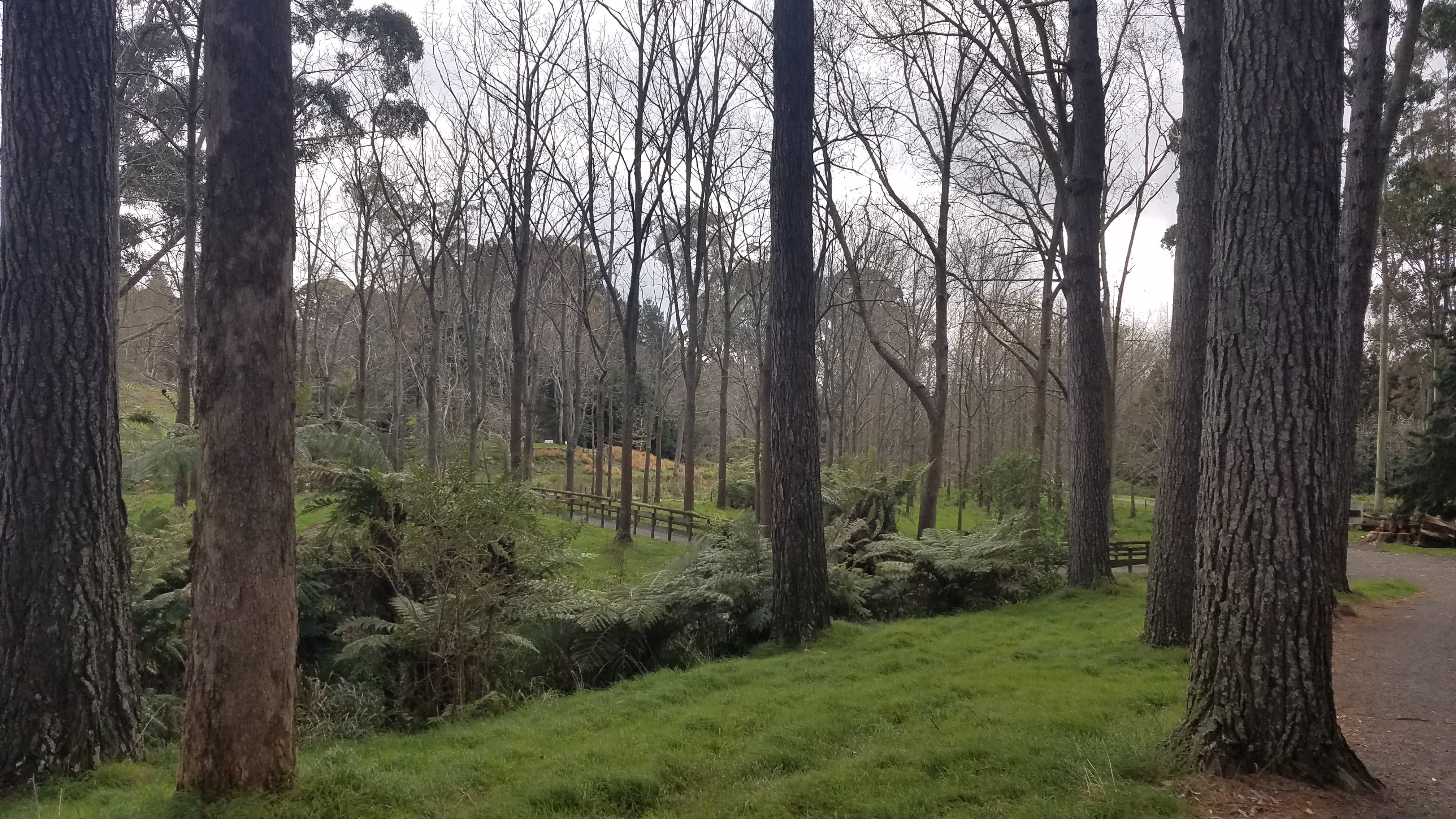 A few cows, peafowl, and a lot of colorful chickens roam among the trees at Taitua Arboretum |
Working at the History Centre became less stressful once it became clear that we would meet the deadlines for all our assigned tasks, but our lives were still far from anxiety-free because the Ultimate Deadline was looming. Sister A, the very efficient and no-nonsense secretary of the Hamilton Mission, informed us that our flight home was scheduled for Wednesday 1 December, so that’s when we would leave—ready or not. We had two major concerns preventing us from feeling physically ready to leave: (1) What to do with all the stuff we had acquired in New Zealand to make our missionary flat and daily lives more comfortable but which we didn’t need to take home with us, and (2) What to do with all the stuff we had acquired in New Zealand that we couldn’t bear to leave behind but which wouldn’t fit in our luggage.
Because no new senior missionary couple would be coming from outside New Zealand anytime soon to replace us, we weren’t sure whether the mission would hang onto our flat or just let it go. Elder and Sister A were unlikely to retain anything we left behind except the standard-issue furniture and equipment because the mission simply did not have storage space even for extra bedding, let alone an abandoned food processor, bathroom scale, and electric hair clippers. And even if our diligent efforts to use up all the food in our pantry were successful, we would still have to do something with the three dozen Sistema food storage containers we had bought to discourage the cockroaches. Of course, there was always the “op shop” (the Kiwi term for thrift store)—except Sister A had told us that local shops had stopped accepting donations from the LDS missionaries because their sudden mass exodus in 2020 had totally overwhelmed the op shops’ storage and distribution capabilities. We finally decided that the best thing to do with our surplus housewares was to give them away, so Michael took a photo of each item and created a digital catalog that we shared via the Dinsdale Ward Facebook page.
Samples of Items in Our Give-Away Catalog
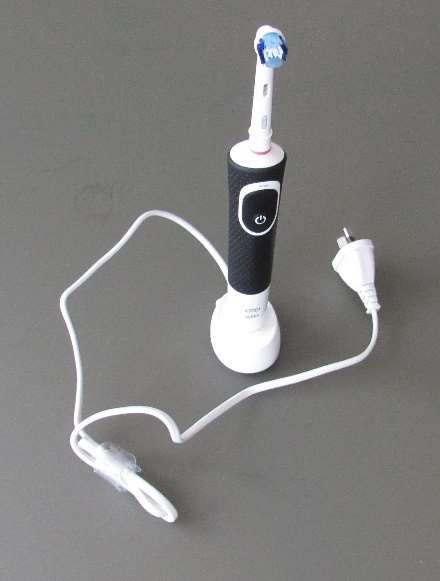 Electric tooth brush |
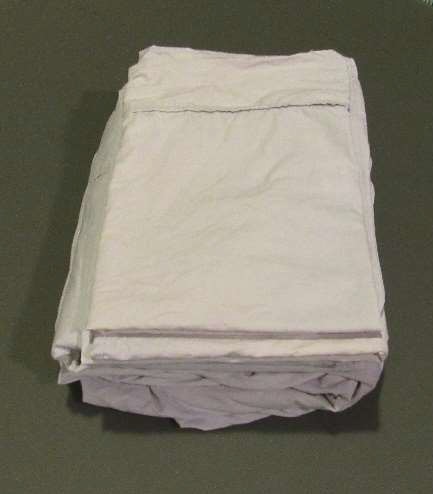 Set of queen-size bed sheets |
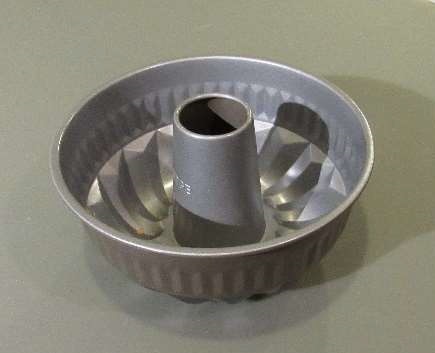 Bundt pan |
 Binoculars |
Eventually, nearly everything was claimed on a first-come, first-served basis by members of our ward family, and we were pleased that our friends were happy to offer continued employment to the things we had found useful during the past two years. It was especially gratifying to learn that much of the stuff we didn’t need anymore was helping at least one pair of newlyweds and a young woman venturing out on her own for the first time to establish their own households.
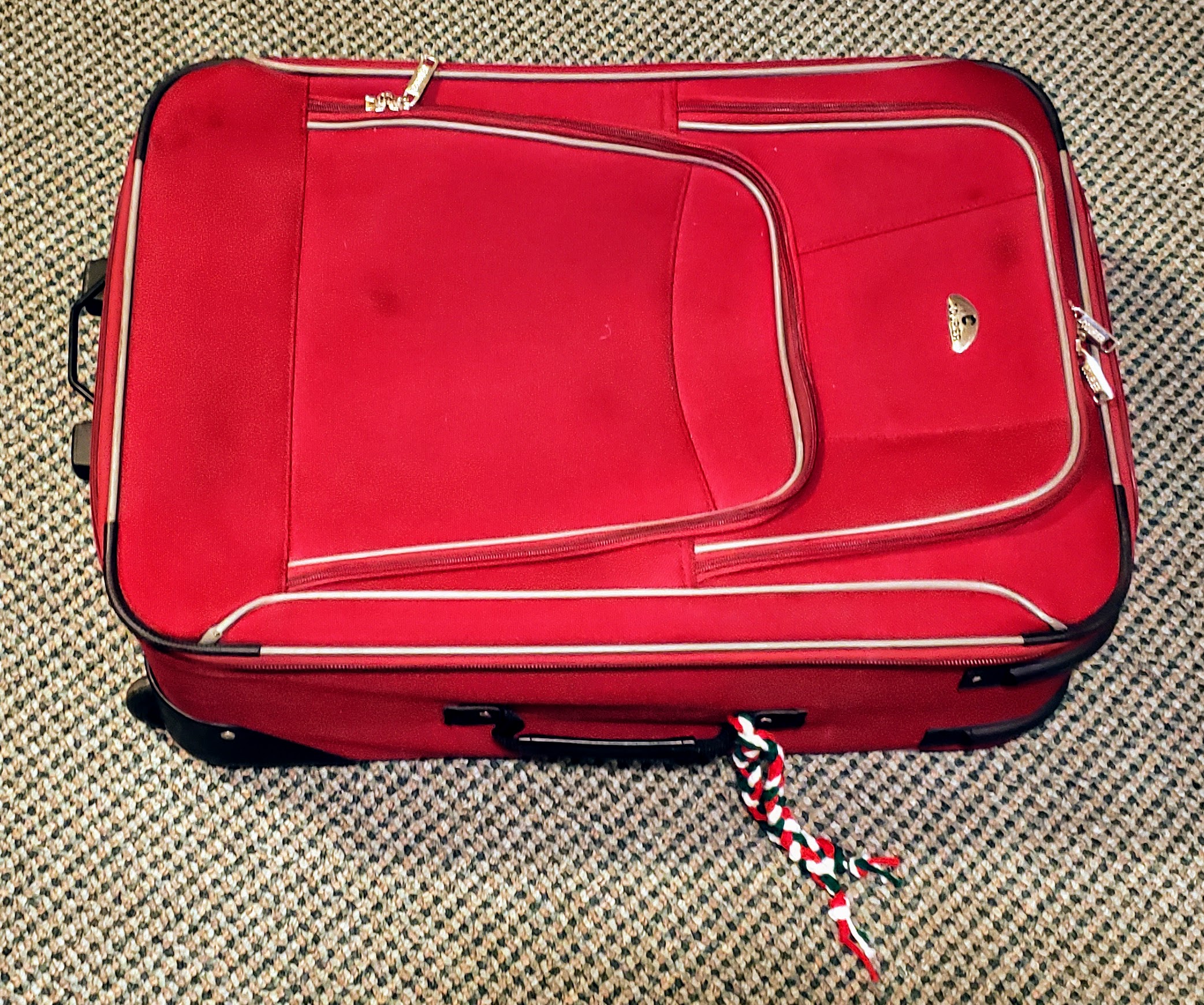
The extra red suitcase
Diane helped us resolve our second concern by giving us an empty suitcase left behind by a young missionary who apparently didn’t have as much to take home as he or she had brought. (Diane had retrieved it from the mission storage room before Elder and Sister A could purge it.) That was the first bag we packed, stuffed with original artwork created by friends, “Kiwiana” fabric to be made into a quilt, wood carvings, pounamu (greenstone) jewelry, several sets of poi for our grandkids, a Māori-language LDS hymnbook, and dozens of seashells collected from beaches all around New Zealand. Michael was not keen on including the shells, but Nancy managed to wedge the large ones into a single TipTop ice cream tub and then ingeniously packed the small ones between some plastic meat trays she had been saving because she knew they would come in handy for something. The packages fit quite nicely into the remaining space in the suitcase without adding enough weight to push it over the 23kg (50lb) limit. We’d already resigned ourselves to paying for one extra bag, but we didn’t want to incur any additional overweight fees.
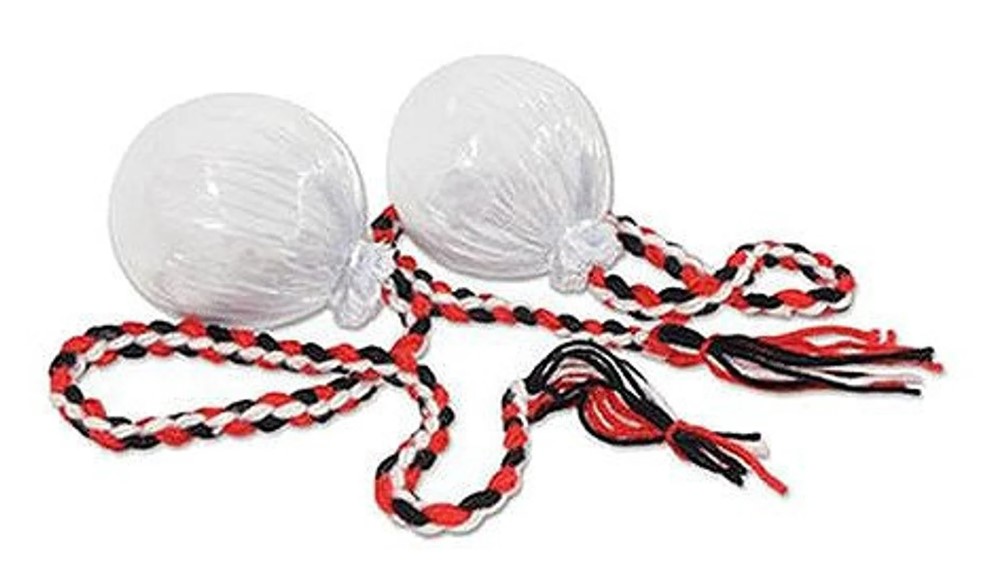
We bought a pair of poi for each of our grandkids, but they will have to depend on YouTube videos to learn how to use them because , due to COVID, Nancy wasn’t able to get any in-person training
Having brought both our official assignments and our “stuff” situation under control by 17 November, when Hamilton was allowed to go back to the relative freedom of Level 2, we now felt at liberty to take a few out-of-town excursions to see at least a little more of what we had hoped to see before we left New Zealand. Unfortunately, shifting COVID reponses and inconsistent alert levels across the country meant that our options were limited. The reservations for a scenic journey through the Southern Alps on the TranzAlpine Railway that we and Diane had made were canceled when COVID forced the railway to suspend service; when the train began running again, seats filled up so quickly that we couldn’t get another booking. Worse, however, was that we were still unable to travel to Auckland, where our dear friends Barry, Eva, Jeff, and Kara had been isolated since mid-August. Because their alert level was always more restrictive than in other parts of New Zealand, and only people with government clearances were permitted to travel in or out of the Auckland region, they and the other American senior missionaries assigned to the Pacific Area office had been relying on regular virtual meetings to stay in contact with each other and with us. Now we feared that we and the six other seniors due to return to the US by early December would never have a chance to say goodbye to each other in person. Security checkpoints were set up on every road crossing the Auckand-Waikato boundary, and any traveler who could not present official documentation certifying their need to cross (and negative results from a recent COVID test) was told—kindly, but firmly—to turn around and go home.
President E knew this to be true from personal experience. He was still trying to help dozens of young missionaries from other parts of the South Pacific return to their home countries as their 18-to-24 months of service came to an end, but seats on flights leaving New Zealand were scarce, and many island nations such as Tonga, Fiji, and Kiribati were not allowing anyone to enter their lands for fear that COVID would overwhelm their fragile healthcare systems. Several young elders and sisters in the Hamilton Mission were forced to continue serving for many months past their original departure dates because they could not get home, but neither could they be released from missionary service in New Zealand without violating the terms of their religious-volunteer visas. When the mission office was finally able to snag a seat for a young Samoan elder on a plane that could take him home, President E loaded him and his baggage into the mission van and headed for the Auckland Airport—only to be stopped at a security checkpoint when they got to the district boundary. President E was not allowed to cross because he was not catching a plane himself; the elder thus missed his flight and had to wait a few more weeks for another seat to open up. When it did, a professional shuttle service with the necessary government travel permit had to be engaged to transport him to the airport.
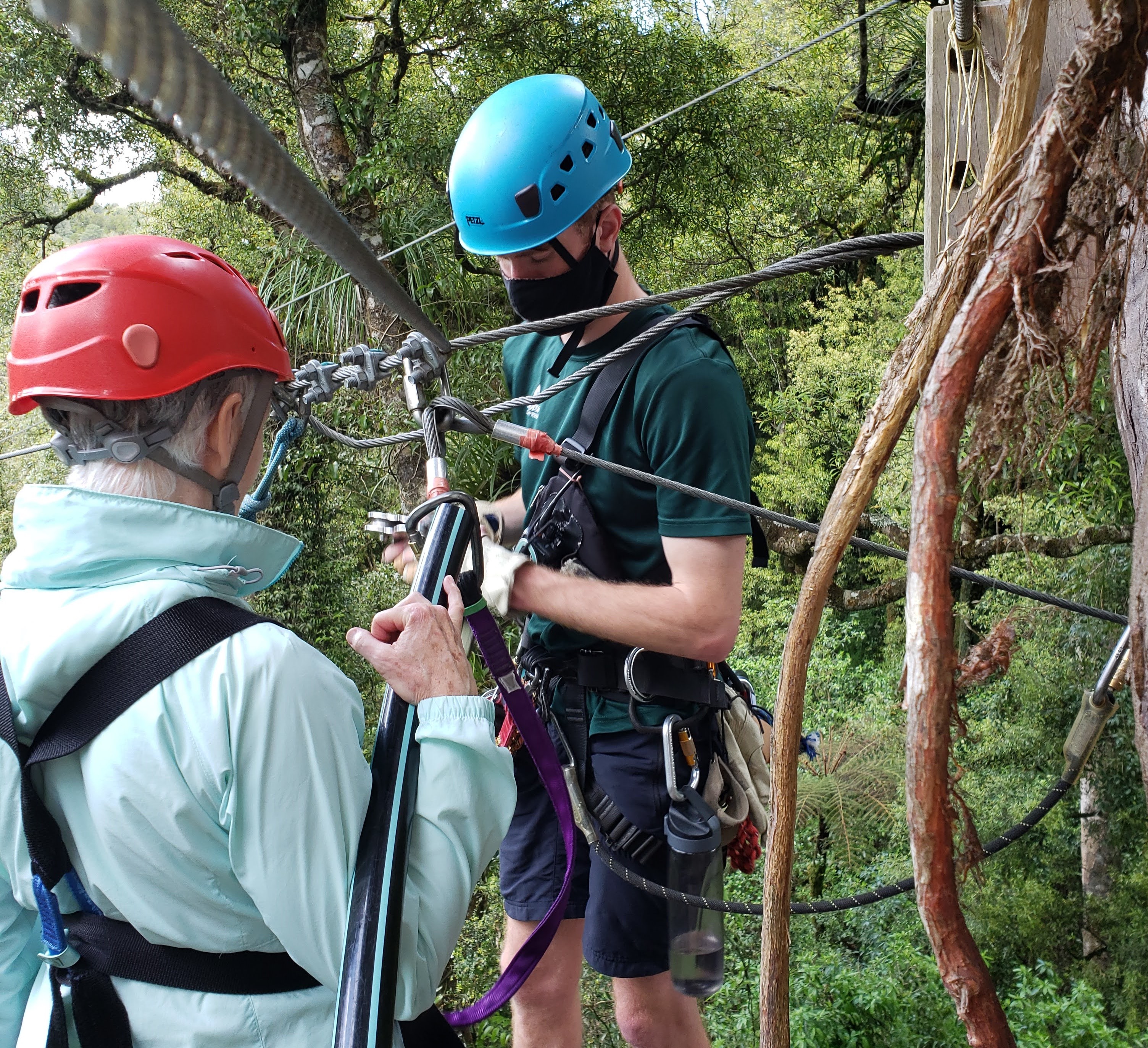
Nancy being secured into her zip-line harness
Happily for us no boundary guards were preventing anyone in the Waikato from heading south, and because we had yet to experience what TripAdvisor had rated as “The World’s #1 Nature Activity,” we decided to book two slots for the Rotorua Canopy Tour when the weather forecast for Friday 19 November looked auspicious. Michael tends to suffer from fear of heights and neither of us had been zip-lining before, so Nancy assumed that he had signed us up for the “Original” tour rather than “Ultimate” tour. Thirty minutes into the 90-minute drive from Hamilton to Rotorua she found out that we were registered for the longer, higher, faster experience—too late to back out—but it took less than a minute on the “trainer” zip line for Nancy to progress from anxiety to exhilaration. It was a little scary at first to descend three steps into complete nothingness, but we had been carefully, thoroughly strapped into our harnesses, and once launched, we felt great! Michael kept his acrophobia in check by looking ahead rather than down, and by gripping guide ropes and tree trunks as tightly as possible as we traversed aerial walkways and swaying suspension bridges to get from one zip line to the next. There were six zip lines in all, each providing a new and incomparable view of the virgin old-growth forest below. The Dansey Road Scenic Reserve has no trails on the ground; the only humans allowed to enter are the conservationists charged with resetting traps for the non-native possums, stoats, and rats that once decimated the area’s bird population, and those who maintain the infrastructure for the zip-line operation. As has been the case with most guided tours we’ve taken through New Zealand’s natural wonders, part of our Rotorua Canopy experience included lessons on conservation efforts. We’re always impressed by the Kiwis’ commitment to protecting their precious land.
The only downsides to the canopy tour: (1) To avoid getting extra gear entangled in the rigging or littering the forest with dropped bottles and food wrappers, participants are not allowed to carry anything—not even water—and (2) The lack of toilets requires keeping one’s bodily functions under control for nearly four hours (no doubt another reason for the no-drink-bottles rule). By the time we had relieved ourselves and returned to the car, it was about 2:30 p.m. and we were famished, so we found a nearby BurgerFuel and tanked up before heading back to Hamilton. We had been looking forward to stopping for ice cream at One Road in Tirau on the way home, and this time made sure to arrive before 5:00 p.m. so we wouldn’t be disappointed to find it closed as we had on some previous occasions. But alas! A sign on the door indicated that this purveyor of superior ice creams was now open only on “weekends,” which apparently does not include Friday afternoons.
The following Friday we took a longer trip south, which we will describe in a separate post. The week in between was our last working at the Matthew Cowley Pacific Church History Centre. With official assignments finished and the museum still closed to the public, Nancy decided to spend the final days of her Church History mission developing some new content for the MCPCHC’s webpages, which hadn’t been significantly updated since 2017. Her aim was to make the MCPCHC’s pages as interesting as those for the Church History Museum, our larger counterpart in Salt Lake City, which includes a section on “Museum Treasures” with photos of unique artifacts and stories explaining their historical significance. Nancy created a series of similar features about items from the Pacific collection, but because she has to depend on others to have them approved by Church History Department leadership and then upload them to the website, it’s likely to be months before any changes appear (which is why we’re not providing a link at this point). Meanwhile, Michael prepared some instructional guides to help the co-workers we were leaving behind understand how to deal with some of the technical issues they were likely to encounter. Both of us spent considerable time getting our personal files sorted and cleaning out our desks. Our twenty-three months in New Zealand were really coming to an end.
Very interesting account–yay for NZ for trying to protect people, but sorry it interfered with people getting home. Contact us when you’re in Utah again!
Congratulations on a successful mission.